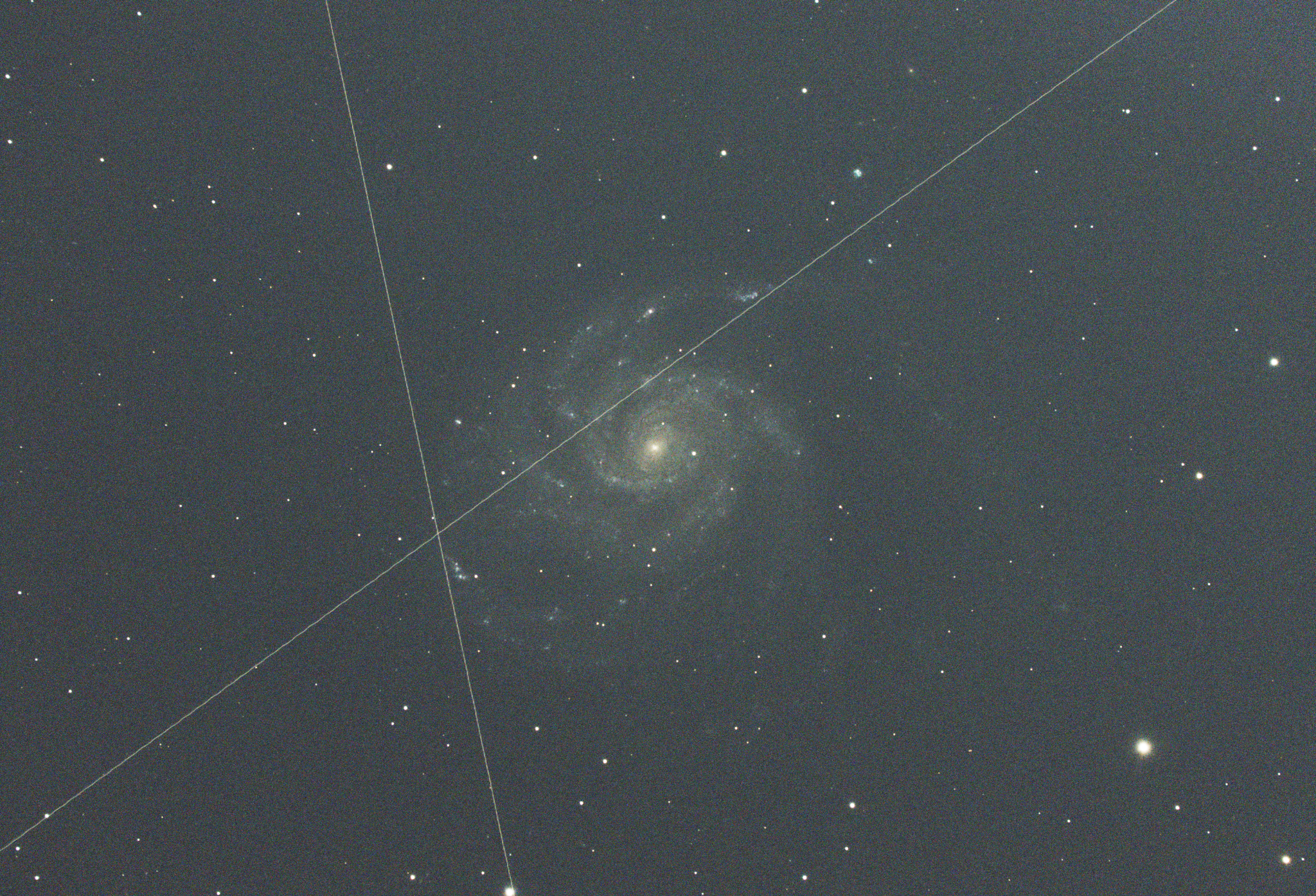Greetings, Satellites
Gifted with a 'surprise' clear sky last night, I decided to set the scope up for some shots of Messier 101: The Pinwheel Galaxy. I was going over the images taken and was surprised to see in one of the five-minute images had been ruined not by one passing satellite but by two. They make a neat crisscross in the image, almost as if nearly missing collision while speeding through their earthly orbits. I opened my planetarium software Stellarium to see if I could identify the two photo-bombers and thought I’d share a little bit of what I found out.
In a 300-second exposure, a lot can happen to muck up your data. From poor star tracking, passing clouds, satellites, airplanes and even meteors: If these near-earth occurrences were not your primary target, they end up leaving nasty marks on your image as they skirt by uninvited. Since faint deep sky objects require a lot of images to make out faint detail, most of these marks are outliers in the overall data and can be cleaned up easily.
Exposure for this image with the two streaks across it began on May 17th at 11:37:19 PM EDT and finished at 11:42:19 PM EDT, 300 seconds in duration. Using Stellarium, I was able to play back the night-sky from this time-frame to see if any known satellites had entered the field of view. I was able to confirm that two different satellites did indeed cross my field of view, which at least rules out UFOs or other anomalies. Below is an illustration of what happened to this image, confirmed using the planetarium software:
- Magnitude: 5.00
- Orbital Period: 95.6 minutes
- Range: 564km
- Time entering frame: 11:37:31 PM from the bottom of the image
- Time leaving frame: 11:37:32 PM from the top-right of the image
- Time in the frame: ~1 seconds
- Cross Section: 22.68 m^2
- Magnitude: 5.72
- Orbital Period: 116 minutes
- Range: 1534km
- Time entering frame: 11:38:27 from the bottom of the image
- Time leaving frame: 11:38:29 from the top of the image
- Time in the frame: ~2 seconds
- Cross section: 2.29 m^2
So even though these satellites (apparently) cross each other’s path in less than one minute, going by the planetarium’s data, they are actually 1,000km apart (if I’m reading this right) as one is 1,000km further from Earth than the other.
These satellites were present in the frame for at most 2 seconds and they were bright enough to leave quite a presence on the image. With so many companies adding their own satellite constellations to Earth's orbit, I understand the concerns that astronomers and scientists have about obstructing our view of the outside world. It’s bad enough that most people are not able to see the night sky as it was a century ago due to the heavy levels of light pollution.
See the image below of Comet Atlas, ruined by a train of Starlink satellites:



Comments
Post a Comment